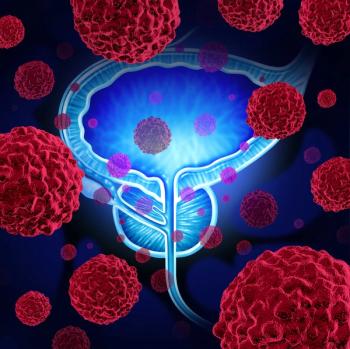
- ONCOLOGY Vol 11 No 9
- Volume 11
- Issue 9
Treatment Prolongs Life of Rats With Incurrable Brain Cancer
The lives of rats with an incurable, rapidly progressing form of brain tumor, similar to glioblastoma in humans, is greatly
The lives of rats with an incurable, rapidly progressing form of braintumor, similar to glioblastoma in humans, is greatly extended through theuse of two experimental anti-cancer techniques, new research shows.
Rats given the glioblastoma-like tumor cells and left untreated diedfrom the tumor after an average of 24 days. Rats receiving the experimentaltreatments, however, lived up to four times longer-an average of more than95 days-and a number of rats seem to have been cured.
"We're very excited about this," said Rolf Barth, professorof pathology with Ohio State University's Comprehensive Cancer Center andlead author for the study. "We really think that several animals werecured. These results are exciting because in 26 years of previous workat this institution, no animals with this tumor were ever cured."
The study was published in a recent issue of Cancer Research.
The Ohio State group combined an experimental technique for disruptingthe blood-brain barrier with an experimental form of radiation therapyknown as boron-neutron capture therapy (BNCT)
For this study, researchers temporarily disrupted the blood-brain barrierby delivering a highly concentrated mannitol solution to the blood vesselsserving the brain. Blood-brain barrier disruption is being tested in humansin several clinical trials, including one at Ohio State's Arthur G. JamesCancer Hospital and Research institute, as a way to improve the treatmentof brain cancer.
The experimental radiation treatment, BNCT, uses boron-containing drugsthat localize in tumor cells. The drug is administered and given time tolocalize in the tumor and be cleared from the rest of the body.
The tumor is then irradiated with a beam of neutrons. Because alphaparticles travel only about the length of one or two cells, the damagethey do is restricted to nearby cells. BNCT is already being used in Japanto treat superficial cancers, and a clinical trial of its use in cancerpatients is under way at Brookhaven National Laboratory in New York.
The study tested two boron-containing drugs, sodium borocaptate (BSH)and boronophenylalanine (BPA). The study sought to determine if blood-brainbarrier disruption would improve the delivery of the drugs to the brainand thereby improve the effectiveness of BNCT.
The study used six groups of animals, with 8 to 10 animals in each group.The scientists implanted 1,000 tumor cells into the brain of each of theseanimals.
"This is a tumor in which 10 tumor cells will invariably kill allof the animals," said Barth.
Three of the treatment groups were given BSH. In one group, the drugwas given intravenously through a vein in the belly; another group receivedthe drug intra-arterially through the carotid artery in the neck; the thirdgroup received the drug through the carotid artery, plus blood-brain barrierdisruption. BPA was given in the same three ways to the other three groupsof animals. Two control groups were also used, with 18 animals in eachgroup.
The tumors in the animals were then irradiated with a neutron beam atBrookhaven National Laboratory. Of the two drugs, BPA achieved the highestconcentration in tumor cells and produced the most prolonged survival.
Barth, who together with Albert Soloway, professor of pharmacy, co-directsthe BNCT program at the Ohio State's Comprehensive Cancer Center, is workingwith Joseph Goodman, associate professor of surgery, and other membersof the research team on a clinical study of the uptake of BSH in patientswith malignant brain tumors. They are also planning a study to determineif intra-arterial administration of BSH, possibly combined with blood-brainbarrier disruption, can increase boron uptake in brain tumor patients.
Articles in this issue
over 28 years ago
UFT: East Meets West in Drug Developmentover 28 years ago
Rationale for Phase I Study of UFT Plus Leucovorin and Oral JM-216over 28 years ago
Postoperative Adjuvant Chemotherapy for Non-Small-Cell Lung Cancerover 28 years ago
UFT in Gastric Cancer: Current Status and Future Developmentsover 28 years ago
Oral UFT and Leucovorin in Patients With Advanced Gastric CarcinomaNewsletter
Stay up to date on recent advances in the multidisciplinary approach to cancer.

























































































